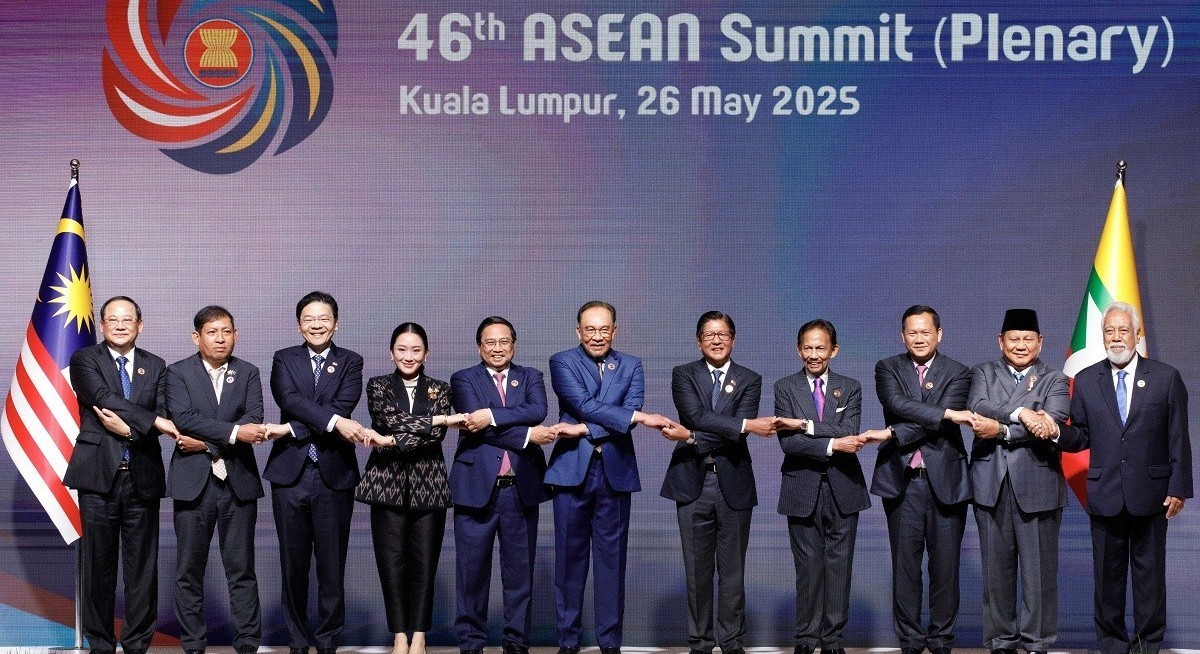Asean's economy is now almost as large as Japan's. Its 10 member states sit at the heart of global supply chains, attracting more foreign investment in recent years than any other developing region. Yet for all this dynamism, Asean remains less connected within itself.
Intra-regional trade has hovered around 20 to 25% of total trade for two decades—roughly half the level seen between Asean and its closest partners: China, Japan, and South Korea, collectively known as the Plus-3. As leaders convene in Kuala Lumpur for the Asean Summit later this month, the question is not whether Asean can afford to deepen integration, but whether Asia can afford for it not to.
The reasons for Asean's shallow internal integration are structural. Wide disparities in income and production sophistication limit complementarities, while intra-Asean investment—at only around a tenth of total FDI stock—remains too shallow to anchor durable supply and demand networks.
By contrast, Asean's integration with the broader Asian production ecosystem has been transformative. China has become the region’s manufacturing hub, tightly linked with Japanese and Korean technology and capital goods. These Plus-3 economies supply critical inputs, transfer know-how, and open access to large end markets.
Over the past two decades, Asean has strengthened its role in electronics, automotive, and digital services value chains anchored by these partners. This external integration is not a substitute for Asean's own cohesion but its natural complement. Precisely because Asean is embedded in Plus-3 production networks, deeper intra-Asean integration would have benefits far beyond the bloc.
A more cohesive Asean would strengthen regional demand and resilience. Sustained intra-Asean trade and investment would create a more stable source of final demand within Asia's production ecosystem, providing a buffer against global volatility. For China, Japan, and South Korea, it would mean a more reliable growth partner whose expansion generates steady import demand for capital goods, technology, and intermediate inputs.
See also: Indonesia at a crossroads
Greater economic cohesion would also reinforce a more stable Asian production system. Integration helps diversify production bases, align standards, and sustain collective competitiveness as global value chains reconfigure.
For the Plus-3, a more cohesive Asean offers a predictable counterpart for cooperation on supply-chain security and financial stability. In this light, Asean's integration agenda is not inward-looking regionalism but a contribution to broader Asian stability.
Progress on trade has been substantial. Tariffs within Asean are close to zero, and work continues to reduce non-tariff barriers, liberalise services, and advance the digital economy. But trade alone will not drive the next phase of integration. Finance must now play a larger enabling role.
The region has moved from broad commitments to practical infrastructure. Cross-border fast-payment and QR linkages are operational and expanding. Central banks are promoting local currency use to reduce foreign exchange frictions. Capital markets are gradually connecting through common disclosure standards and regional bond initiatives. Banks are extending regional footprints, while sustainable finance taxonomies are converging to attract long-term capital.
See also: Trumpian world provides opportunities for Asean: UOB's Chin
These financial linkages are not abstract. They reduce settlement times and transaction costs, stabilise working capital, and allow firms—especially small and medium-sized enterprises—to operate more seamlessly across borders. In short, financial connectivity is turning the idea of integration into daily practice.
Asean’s progress is further reinforced by the Asean+3 finance process and cooperation frameworks. The Chiang Mai Initiative Multilateralisation (CMIM) provides a US$240 billion financial backstop. The Asian Bond Markets Initiative has fostered local-currency bond markets. The Asean+3 Macroeconomic Research Office (AMRO) supports policy coordination through independent macroeconomic surveillance. Together, they form an institutional foundation that few other regions can match.
To bring Asean integration to the next level, the region must combine Plus-3 leverage with deeper intra-Asean investment. Maximising spillovers from Chinese, Japanese, and Korean investment can raise productivity and move Asean economies up the value chain in advanced manufacturing, digital services, and green industries. At the same time, enabling Asean's own firms to internationalise will thicken intra-regional investment ties.
If these elements move in tandem with ongoing trade and services liberalisation, AMRO’s own modelling suggests that intra-Asean trade could approach 40 % of total trade by 2050, up from around 25 % today. The mechanism is straightforward: Plus-3 investment builds capability; Asean firms anchor that capability within the region; and deeper intra-Asean investment attracts higher-quality capital, reinforcing trade intensity.
From Jakarta to Hanoi, Manila to Bangkok, I have seen how openness—when paired with practical financial infrastructure—can turn uncertainty into opportunity. That is the perspective I bring to the upcoming Summit: a partnership lens that prioritises the “plumbing” of integration, allowing businesses to operate regionwide as a matter of course.
If Asean can turn commitments into routines and frameworks into functioning ecosystems, it will not only match Japan in economic size but build a model of integration uniquely suited to Asia's diversity. The next chapter must be about connection through complementarity—open markets, strong financial infrastructure, and deep partnerships with the Plus-3 that turn diversity into competitive strength.
Such an outcome would serve not only Asean's 700 million population but also the more than two billion people across the Asean+3 region, helping to anchor stability and prosperity in an increasingly uncertain world.
The writer is director/ CEO, Asean+3 Macroeconomic Research Office (AMRO)




